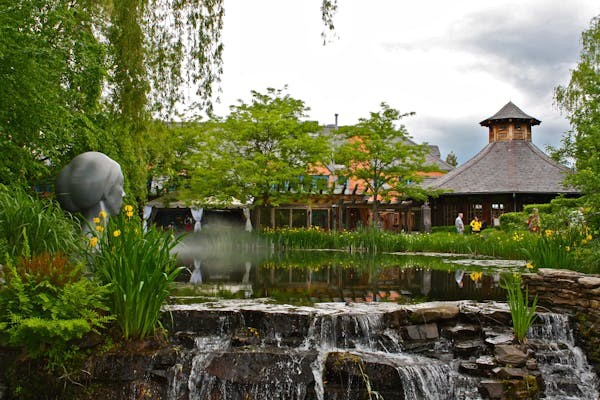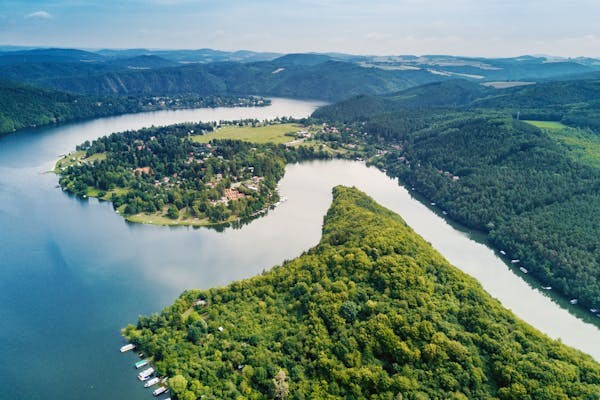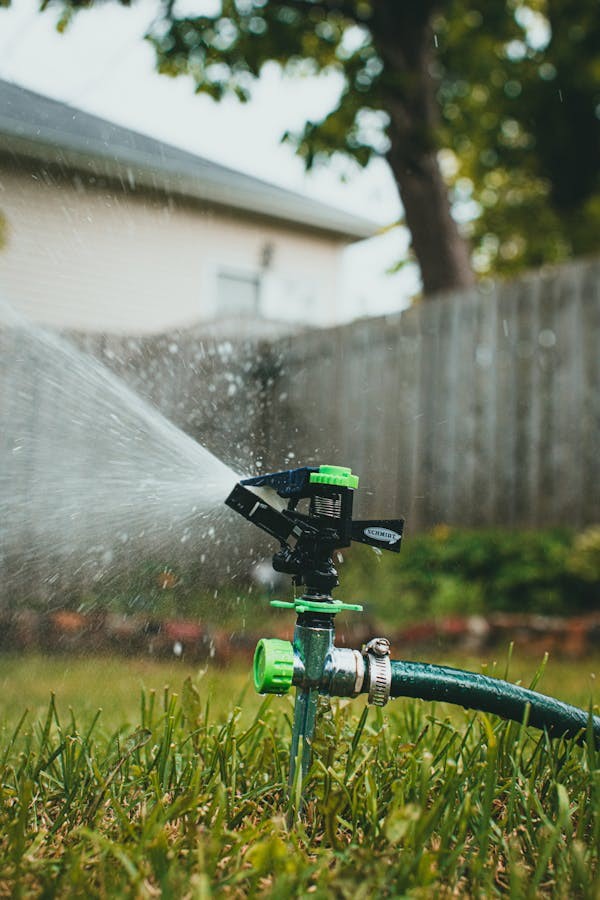
1. What is Water-Wise Landscaping?
Water-wise landscaping refers to designing and maintaining outdoor spaces in a way that minimizes water use while still creating an attractive, functional environment. This practice involves selecting plants that are drought-tolerant, using efficient irrigation methods, and optimizing the soil for better moisture retention. The goal is not only to conserve water but also to create gardens that thrive with minimal upkeep.
At its core, water-wise landscaping is about making informed choices—whether that’s opting for native plants that are adapted to your local climate or installing a rainwater harvesting system to make the most of natural resources. The best part is, you don’t have to sacrifice beauty for efficiency. With the right planning, your garden can be both lush and sustainable.
2. Benefits of Water-Wise Landscaping
Water-wise landscaping offers a variety of benefits that go beyond just saving water. For starters, it can significantly reduce your water bill. By using less water, you’ll notice a decrease in your monthly expenses. But the benefits don’t stop there:
- Environmental Impact: Less water usage means less strain on local water supplies, which is especially crucial in areas prone to drought.
- Cost Savings: Reduced need for irrigation systems and fertilizers means lower maintenance costs.
- Increased Property Value: Homes with well-designed, sustainable landscapes are more attractive to potential buyers.
- Reduced Maintenance: Water-wise gardens often require less upkeep due to their resilience to extreme weather conditions.
By adopting water-wise practices, you’re contributing to a larger effort to preserve natural resources while enhancing your own property.
3. Key Principles of Water-Wise Landscaping
When planning a water-wise garden, several key principles come into play:
- Right Plant, Right Place: Choose plants that are well-suited to your region’s climate and soil. Native plants are often a great choice because they’re already adapted to local weather patterns and require less water.
- Soil Health: Healthy soil retains moisture better, so consider adding organic matter or mulching to improve its structure and water-holding capacity.
- Efficient Irrigation: Utilize drip irrigation or soaker hoses, which target the roots of plants, minimizing water waste.
- Zoning: Group plants with similar water needs together. This ensures that each plant gets the right amount of water without overwatering others.
These principles form the foundation for an effective and sustainable water-wise landscape design.
4. Choosing the Right Plants for Water Efficiency

One of the most important steps in creating a water-wise garden is selecting the right plants. Look for species that are drought-tolerant, as these plants can thrive with minimal watering once established. Native plants are often the best option because they are already acclimated to your region’s soil and weather conditions.
Some popular water-efficient plants include:
- Succulents: These plants store water in their leaves, making them ideal for dry climates.
- Lavender: Known for its fragrant purple flowers, lavender thrives in full sun and is highly drought-tolerant.
- Coneflower: This hardy perennial is a beautiful addition to any garden and doesn’t need much water once it’s established.
Incorporating a mix of these plants can create a colorful, low-maintenance garden that thrives even in hot, dry conditions.
5. The Role of Soil in Water Conservation
Soil plays a crucial role in how much water your garden needs. Healthy, well-structured soil can hold moisture more effectively, reducing the need for frequent irrigation. If your soil is sandy or compacted, it won’t retain water as well. Improving soil quality can help maximize water efficiency.
To improve your soil:
- Add Organic Matter: Compost, mulch, and organic fertilizers can improve soil structure, making it more capable of holding moisture.
- Avoid Soil Compaction: Heavy foot traffic can compact soil, reducing its ability to absorb and retain water. Create designated pathways to minimize this issue.
By giving your soil the care it needs, you’ll create an environment where water can be used more effectively, benefiting both your plants and your water bill.
6. How to Design a Water-wise landscaping
Designing a water-wise garden requires thoughtful planning. Consider the layout, plant placement, and hardscaping elements that can help reduce water usage. Start by choosing a design that minimizes the lawn area—lawns typically require a lot of water to maintain.
- Use Mulch and Gravel: These materials help retain moisture in the soil while reducing evaporation.
- Create a Rain Garden: A rain garden is a natural way to capture and manage rainwater, allowing it to soak into the ground rather than running off.
- Incorporate Hardscaping Features: Pathways, retaining walls, and other hardscaping elements can reduce the amount of plant material in your garden, thus reducing water needs.
Incorporating these elements not only helps conserve water but also adds visual interest to your garden design.
7. Irrigation Systems for Water-Wise Landscaping
Efficient irrigation is key to reducing water usage in your landscape. Traditional sprinklers can be wasteful, often watering sidewalks or driveways. Instead, opt for more efficient systems like drip irrigation or soaker hoses, which deliver water directly to the plant roots.
- Drip Irrigation: This system provides a slow, steady supply of water directly to the soil, minimizing evaporation and runoff.
- Rain Barrels: Collecting rainwater in barrels can help supplement your irrigation needs, especially during dry spells.
By using smart irrigation techniques, you can ensure that your garden gets the right amount of water while avoiding waste.
8. Drought-Tolerant Landscaping Ideas
If you live in an area prone to drought, drought-tolerant landscaping can make a huge difference. Focus on creating a landscape that thrives without regular watering. Here are some ideas:
- Cacti and Succulents: These plants require very little water and come in a variety of shapes and sizes, making them perfect for arid climates.
- Xeriscaping: This landscaping technique uses drought-tolerant plants, rocks, and mulch to create a beautiful, low-maintenance garden that requires minimal water.
With drought-tolerant landscaping, you can have a stunning garden that is both eco-friendly and easy to maintain.
9. Native Plants: The Foundation of Water-Wise Landscaping

Native plants are the backbone of water-wise landscaping. These plants are adapted to local conditions, so they need less water, fertilizer, and maintenance than non-native species. They also provide habitat for local wildlife, promoting biodiversity.
Examples of native plants include:
- California Poppy: A colorful, low-maintenance plant that thrives in dry, sunny conditions.
- Milkweed: Important for pollinators like monarch butterflies, this plant requires minimal watering once established.
By choosing native plants, you’re not only conserving water but also supporting your local ecosystem.
10. Maintenance Tips for Water-wise landscaping
Even though water-wise gardens require less maintenance than traditional gardens, they still need some care. Here are a few tips to keep your garden thriving:
- Watering: Water early in the morning or late in the evening to reduce evaporation.
- Mulching: Apply a layer of mulch to help retain moisture and prevent weeds from growing.
- Pruning: Remove dead or damaged plants to keep your garden healthy and attractive.
With minimal effort, your water-wise garden will remain vibrant and sustainable.
Conclusion
Water-wise landscaping is a smart and sustainable way to create a beautiful garden while conserving water. By making informed choices about plants, irrigation systems, and soil health, you can reduce your environmental footprint and create an outdoor space that thrives with minimal upkeep. Whether you’re motivated by water conservation or simply looking for a low-maintenance garden, water-wise landscaping offers countless benefits for both you and the planet.
FAQs
1. What are the best plants for water-wise landscaping?
Plants like succulents, lavender, and coneflowers are excellent choices because they thrive in dry conditions and require minimal watering.
2. Can water-wise landscaping save me money?
Yes, by using less water, you can lower your water bills, and the reduced maintenance costs will save you money over time.
3. How do I improve soil for water conservation?
Adding organic matter like compost and using mulch helps improve soil structure, allowing it to retain moisture more effectively.
4. What is xeriscaping?
Xeriscaping is a landscaping method that uses drought-tolerant plants and efficient watering techniques to conserve water.
5. Can I make my existing garden more water-wise?
Yes, you can update your garden by adding drought-tolerant plants, improving your soil, and switching to a more efficient irrigation system.








